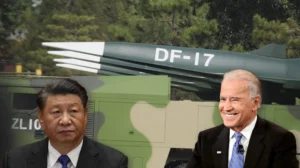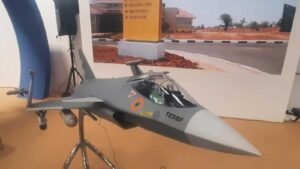Source : Chinese Media

T-90S deployment by India forced China to bring in Type-99 MBT
China’s military strategy has witnessed a shift in recent years as it adapts to the challenges presented by Sino-Indian border frictions. With a focus on close cooperation between border guards and field troops, China has effectively countered India’s advances in the disputed regions. This transformation can be attributed to China’s ongoing military reform, which aims to update its overall deployment strategy and overcome historical vulnerabilities.
Previously, the Chinese Army’s deployment was influenced by the Cold War era, with a primary focus on countering the Soviet Union’s threat. Adopting a defensive counterattack strategy due to a perceived imbalance of power, China’s main force was positioned along the Helan Mountains, Yinshan Mountains, and Yanshan Mountains. This approach aimed to prevent a repetition of historical mistakes, such as the Soviet Army’s encirclement and annihilation by Germany during World War II.
However, the Sino-Indian confrontations along the border, particularly in the Spangul Lake area on the south bank of Pangong Lake in 2020, prompted China to reassess its military capabilities. During these clashes, China’s Synthetic Sixth Division’s 88A main battle tank initially held an advantage but fell behind when facing the Indian Army’s third-generation T-90S main battle tank.
To address this disparity, China swiftly transferred its third-generation main battle tank, the 99A, from the “Dawn Xiongguan Brigade” of the heavy synthetic 62nd brigade in the 76th Group Army stationed in Jiayuguan, Gansu. This strategic move was aimed at bolstering its frontline forces and inadvertently became known through “official leaks” in Chinese news reports.
China’s ability to prevent India from gaining an upper hand in recent border frictions has been attributed to the effective coordination between its first-line border guards and the second- and third-line field troops. This synergy between different units has played a crucial role in maintaining a strong defense and deterring Indian advancements.
As China continues its military reform efforts, the nation is reevaluating its overall deployment strategy to meet the evolving security challenges. By adapting its military capabilities to effectively counter emerging threats, China aims to protect its territorial integrity and maintain stability along its borders.
It remains to be seen how this ongoing military transformation will shape future Sino-Indian border dynamics and the overall regional security landscape. T-90S deployment by India forced China to bring in Type-99 MBT T-90S deployment by India forced China to bring in Type-99 MBT T-90S deployment by India forced China to bring in Type-99 MBT T-90S deployment by India forced China to bring in Type-99 MBT IgMp






